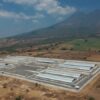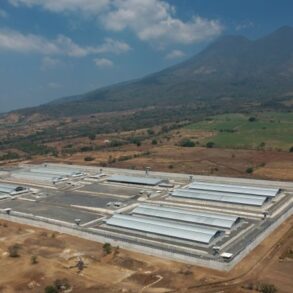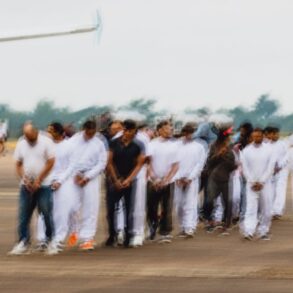The lock on his cell in the prison in the Syrian city of Tartus creaked. “You’re free,” they told him. After 43 years and 15 days in prison, pilot Ragheed al-Tatari was walking in the sunshine as a free man, at the age of 70, having been Syria’s longest-serving political prisoner. The calendar read Monday, December 9, 2024, when jubilation filled the penitentiary where, aware of the recent fall of Bashar al-Assad’s regime, the jailers decided to release the prisoners before fleeing. Ragheed was one of them.
The fighters of the Islamist militias grouped under Hay’at Tahrir al-Sham (HTS) had not yet reached this predominantly Alawite stronghold of the Assad regime, but images of long-bearded militiamen freeing prisoners from the infamous Sednaya prison on the outskirts of Damascus had already spread across screens around the world. Assad had fled aboard a plane to Moscow, ending 24 years of rule and half a century of the Assad dynasty. As history would have it, in 1981 it was Hafez al-Assad, Bashar’s father, who ordered Al-Tatari’s imprisonment, precisely for inciting other pilots to desert aboard their fighter jets.
Al-Tatari, then 27, was a handsome young pilot — judging from the photos he has preserved — when his partner, pilot Maamun Nakar, landed his fighter jet in Amman, the Jordanian capital, in November 1980 to request political asylum. Nakar had fled to avoid orders to bomb his hometown of Hama during protests led by the Syrian branch of the Islamist Muslim Brotherhood. A second pilot, Abdelaziz Abed, also defected. A few months later, Al-Tatari was arrested along with other pilots. “They accused me of colluding with Americans, Jordanians, and Egyptians in the defection of Syrian army pilots. It was all fabricated,” he says.
“Social media has blown the situation out of proportion,” clarifies the aviator, whom the Syrian and international press have presented in recent weeks as “the pilot imprisoned for refusing to bomb civilians.” “I never received orders to bomb civilians, but I did urge my comrades to refuse to do so,” he notes. “I simply realized that we were an instrument of the [Assad] regime, working to preserve its survival and not to protect the country.” Al-Tatari has outlived the two defecting pilots in captivity: Maamun died of Covid in Amman in 2021, and Abdelaziz was shot by the secret services in 1993, in an ambush, while illegally infiltrating northeastern Syria.
“I was always free here,” says Al-Tatari, tapping his temple with his index finger. Since his release, this affable septuagenarian has been traveling around the country, visiting friends he met in prison and discovering a Syria disfigured by the past 14 years of war, poverty, and bombing.
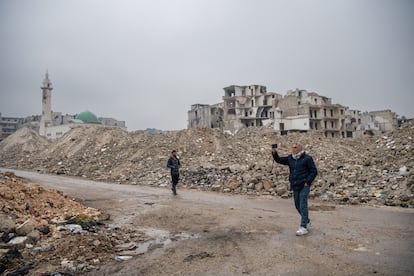
He walks among piles of rubble in Al Mashhad, one of the neighborhoods in Aleppo that was hardest hit by the Syrian Air Force under Bashar al-Assad’s command. Al-Tatari films the skeletons of buildings with his cell phone, realizing for the first time the scale of the destruction of the country that so many young prisoners had described to him behind bars after the outbreak of the revolution in March 2011.
Al-Tatari, who was imprisoned under Hafez al-Assad and then under his son Bashar al-Assad, claims that the prison conditions during both periods were exactly the same. Only in Suwayda prison did he have “a cell phone and a decent bed.” He had not been married “even four months” when he was arrested, on November 24, 1981. While deprived of his liberty, he learned that he was going to be the father of a son, whom his wife, Sama, named Wael and whom he met for the first time in 1997, when the boy was already 16 years old, during visiting hours. He was also widowed behind bars, in 2018.
Since then, he hasn’t seen his only son, who lives as a refugee in Canada and who in a few weeks will “get his papers sorted out,” says Ragheed, to come and meet him for the first time outside of prison. The first person he visited upon leaving Tartus prison was his lawyer, Khadija Mansour, the fourth defense attorney he had during his interminable legal journey.
The interview with Al-Tatari, which begins at the home of some friends and continues on the streets of Aleppo and in the car, is constantly interrupted by the beeping of WhatsApp messages. A stranger asks if he knows anything about his father, imprisoned in the 1970s. He attaches a black-and-white photo. “I don’t recognize him at all,” sighs Al-Tatari, who has been contacted by hundreds of Syrians hoping that he might have seen a relative who disappeared in the dungeons over the last half-century. Groups of former prisoners review thousands of photos with the faces of the more than 100,000 people who went missing under the regime to identify those who survived captivity, or to confirm that they succumbed to torture and disease.
Al-Tatari has spent many more years in captivity than in freedom. He relays his memories with the help of his fingers: he spent the first three years in the dreaded Damascus detention center known as the “Palestinian branch.” It was there that he suffered the worst torture, which has left him with a slight limp in his left leg, broken by bludgeoning. It was also there that he learned about the bombing of Hama, a massacre perpetrated by Hafez al-Assad’s army in 1982 that left more than 20,000 people dead in less than a month.
Those three years were followed by another year in Meze prison (Damascus), 15 years in Palmyra prison, 10 years in Sednaya and five years in Adra prison (both on the outskirts of Damascus), six years in Suwayda prison in the south, and the final three years in Tartus, on the coast. Al-Tatari asserts that 95% of the prisoners at Palmyra were Muslim Brotherhood members and recounts how they witnessed, from prison, the fall of the Soviet Union, a historic ally of Syria.
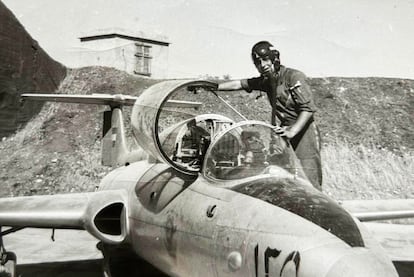
In his account, Al-Tatari connects each prison with a historic turning point in Syrian politics. He experienced a prisoner riot in 2008 in Sednaya that lasted almost six months. Hardened by spending two-thirds of his life behind bars, in 2011 he welcomed young men arrested during the protests into the overcrowded cell. Their cries of pain as they were dragged into the torture chambers provoked a revolt among the most seasoned prisoners. “We refused to eat, banged on the doors with our cups, and threatened a revolt if they continued torturing them,” he says. From that conglomeration, dubbed “the human slaughterhouse,” forensic photographer Farid Al Madhan, until recently known as Caesar, managed to escape with 27,000 photographs of Syrian civilians who had died with signs of torture on their bodies.
After six months of protests and subsequent arrests, the Sednaya leadership decided to transfer the oldest political prisoners to Adra prison, the first civilian penitentiary in which Al-Tatari set foot. He attacks the international sanctions, which, he says, “have benefited the regime and impoverished the population.” The impact was felt in the prison, he asserts, where all expenses are borne by the prisoners.
His friends are former inmates, like 38-year-old Abdallah, with whom he shared a cell from 2013 to 2016 along with 137 other men in a space designed for 35. Loved by all, Al-Tatari’s mental and physical resilience made him a sort of therapist for the hundreds of prisoners he met. Now he dreams of opening a painting school in Damascus. He wants to paint its people and its streets, which he now explores with a serene gaze. “I escaped from prison every day by painting,” he says, scrolling through the portraits he drew in captivity on his cell phone screen. He isn’t thinking about flying a plane again, but four days after leaving prison, he was already driving recklessly through the chaotic Syrian traffic. Celebrated as a hero across the country, Al-Tatari’s face has become a symbol of the arbitrary nature of the Assad regime’s prison system, but also of rebellion against its dictates.
Sign up for our weekly newsletter to get more English-language news coverage from EL PAÍS USA Edition
This post was originally published on this site be sure to check out more of their content.


